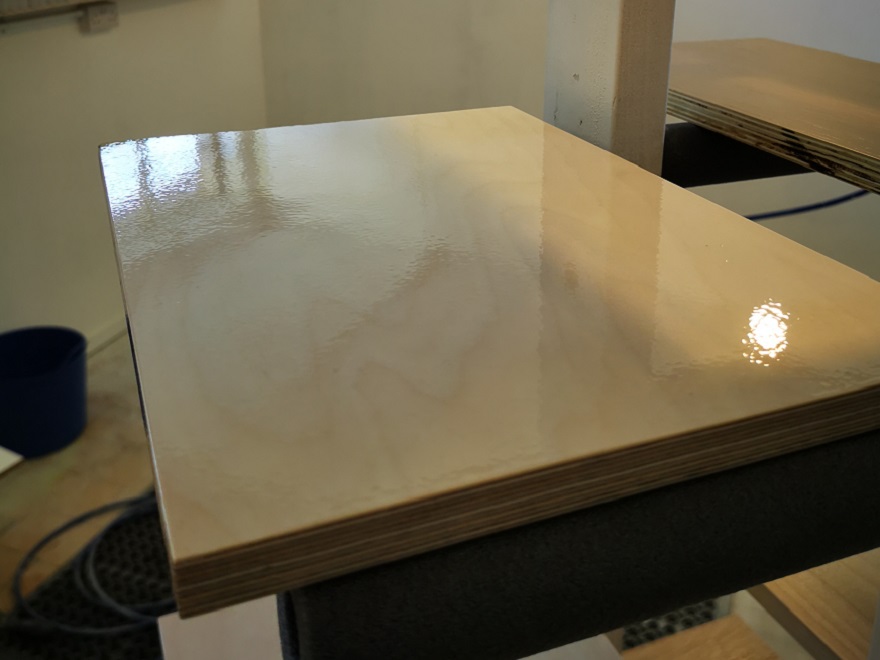One of the primary inquiries we frequently receive is what sets apart spray coating and brush coating. Painting furniture and walls provides a cost-effective way to revitalise your home, avoiding the need to purchase new furniture. The most suitable technique for applying paint will vary depending on the furniture and the desired finish appearance.
What Is Brush Coating
Brush coating involves applying paint coats using a paintbrush. While it may take more time than other methods, brush coating offers a more precise finish.
Brush coating has numerous advantages: it allows you to choose from a wide range of colours and create custom colours. Additionally, it is less toxic when used indoors without proper ventilation, and it gives you the ability to achieve the desired outcome.
The key to achieving a flawless finish with brush coating lies in utilising high-quality tools. When using a paintbrush, apply a thin coat of paint using an angled brush. This technique enables you to paint detailed areas and surfaces with specific moulds and grooves.
What Is Spray Painting
Many are already familiar with spray paint, but for those new to it, it essentially involves using paint in a sprayable can. People often use this form of paint for its convenience, and it is especially suitable for achieving a high gloss or satin finish.
Spray painting is ideal when aiming for even coverage without any visible brushstrokes. It is a much faster method of painting surfaces; however, the area being painted needs to be well-ventilated and well-lit. In most cases, a single coat of spray paint is sufficient for good coverage, and the drying time is significantly faster than with brush coating. Spray coating also allows access to hard-to-reach areas, making it particularly useful for pieces of furniture with intricate mouldings and crevices.
How To Prepare The Paint Before Spraying or Brush Coating
The preparation process is quite similar for both methods of painting. You must ensure that the surface is smooth and free from debris, dirt, or grime before applying any primers. Proper adhesion of paint is not possible with a dirty surface. Additionally, make sure all surfaces are dry and free from moisture, as this can also affect the final paint finish. If there are any bumps or imperfections on the surface, consider using filler from Tool Station to smooth them out.
Before you start painting, ensure that other areas and household items are well-covered to avoid splattering paint everywhere.
Why Use A Primer?
While some may consider primers unnecessary, they are often crucial. Many believe that paint companies overstate the need for primers, but achieving the best finish often requires their use. Wood and drywall are two materials that benefit significantly from primers as they tend to be porous. A primer helps create a smooth surface, allowing the colour paint to appear more vibrant.
If the previous paint on the object or surface has a glossy finish, a primer will likely be necessary. Paint does not adhere well to glossy surfaces, so sanding the surface before applying a coat of primer may be required. For those looking to apply a light coat over a dark colour, a white primer can be beneficial. This saves time and prevents paint buildup. Too many coats of paint can lead to issues like bubbling, flaking, and cracking.
What Materials Can I Spray Coating?
Most materials can be spray-coated with the right type of spray paint and proper technique. For metal, plastic, and wood, various spray paints are available, including RAL colour aerosols, British Standard spray paints, and Pantone colour spray paint.
The following materials can all be spray-coated:
- Aluminum
- Glass
- Plastic
- Vinyl
- Wood
- Surfaces with existing paint
Do Not Hesitate To Use Spray Paint
Although using spray paint for the first time may seem intimidating, once you get the hang of it, you’ll likely find yourself spray-coating most household items. It is a cost-effective way to restore the flawless appearance of items and extend their lifespan. If you enjoy frequently changing the look of your home, spray coating is an ideal choice. Remember that spray paint isn’t limited to home use; it can also be applied to cars, making it suitable for most exterior bodywork.
Painting
No matter the technique you choose for painting your surface or item, the key to achieving a superior finish lies in preparation. Ensure that your items have been properly sanded and cleaned. Avoid applying a coat of paint to surfaces with the potential to flake or bubble later on. Primers play an essential role in providing a smoother finish for porous surfaces.


